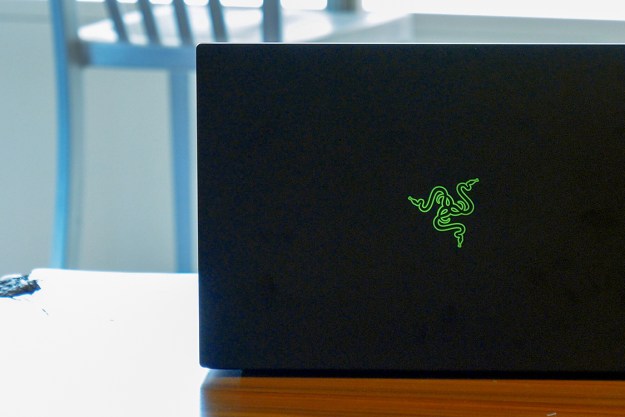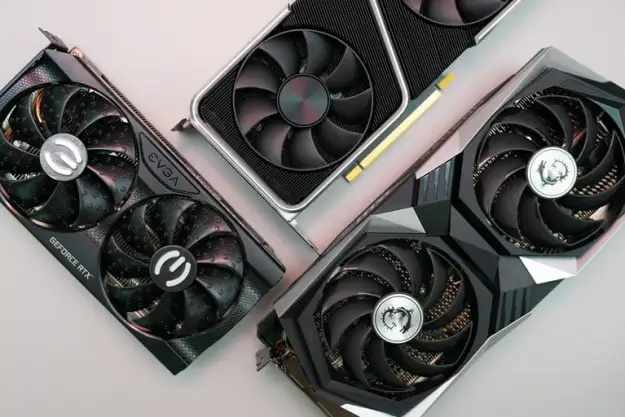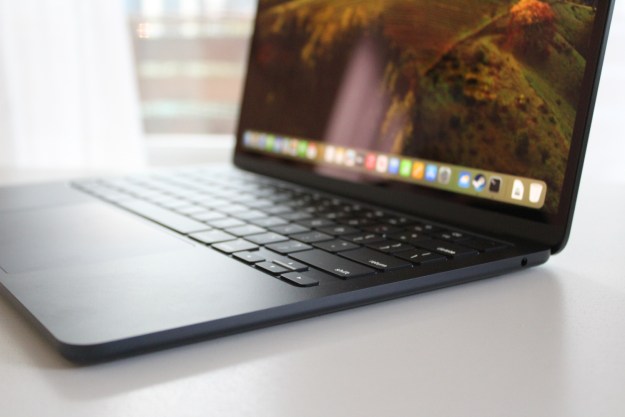
“The Razer Blade is the best of both worlds.”
- Beautiful, thin design
- Excellent gaming performance
- Impressive battery life
- Robust build quality
- High refresh rate display
- Questionable keyboard layout
- Runs hot
Gamers have grown up.
Plenty of us love to play games, but we also have jobs and computing needs outside the arena. We want the best of both worlds — something as sleek as a MacBook, but with the horsepower of a desktop command station. It’s a goal Razer has always shot for with the Blade, but past iterations made compromises to stay on target.
With the 2018 Blade, though, Razer may have finally done it without any downsides – aside from the price. The new Blade starts at $1,900 for an 8th-gen Core i7, Nvidia GTX 1060 Max-Q graphics, 16GB of
A masterclass in laptop design
Razer has always tried to market itself as the Apple of gaming, focusing on devices that are expensive, but also innovative and robust. Past versions of Razer
The new Razer Blade 15 bucks that trend with a fresh take on the thin-and-light gaming laptop. It’s still refined, and it still has a unibody aluminum chassis, all black except the growing green snake logo on the lid. However, Razer has ditched the indented lines on the top and rounded corners in favor of a simpler, boxy look. It’s a striking aesthetic that ensures no one will again mistake the Blade for a MacBook. The new Blade is also slightly trimmed down from 0.7 to 0.66 inches yet has become only more durable in the process. Good luck finding any flex or give anywhere on this device.
Good luck finding any flex or give anywhere on this device.
The Razer Blade 15 weighs 4.5 pounds, which is half an ounce heavier than the previous version. There’s a good reason for that. The screen has bumped up to 15.6 inches, but Razer has lopped off the display bezels to just 0.19 inches, which is even thinner than the Dell XPS 15. That keeps the overall footprint within millimeters of the same size as the 2017 model, despite having a larger screen. The top and bottom bezels are still large, but that gives Razer room to leave the 720p webcam where it belongs.
Razer isn’t alone in this new category of thin-and-light
Port selection is an area where you’d think gaming machines and thin-and-light
The Razer Blade offers a USB-C
Great inputs, a questionable keyboard layout
Razer Blade has a history making PC peripherals, so we expect the company’s integrated keyboards and touchpads to be excellent — and for the most part, it’s a home run. The touchpad is now considerably larger than before, stretching across the palmrests more than any laptop other than the MacBook Pro. The smooth, glass surface uses Windows Precision Touchpad drivers, meaning gestures are responsive. It’s hands-down one of our favorite touchpads on any machine, rivaling the excellent Surface Book 2 and the XPS 15.
There’s no sidestepping the fact that Razer made an unnecessary change to the keyboard layout.
The keyboard is good, but more divisive. It’s not the key travel, RGB lighting options, or even spacing that’s the issue — all of that is great. The problem is the layout. Located in the bottom right corner of the keyboard, right between the shift key and the question mark, is an up-arrow key. While this means you get a full-sized up and down arrow key, the trade-off doesn’t feel worth it. We found ourselves consistently hitting the up-arrow key instead of typing a question mark. While we familiarized ourselves with it after a time, there’s no sidestepping the fact that Razer made a completely unnecessary change to the standard layout.
Less bezel, faster refresh rate
One of the reasons Razer claims it moved to a 15.6 screen was a wider availability of high-quality panels to choose from — and that shows on the Razer Blade. There’s now three options: 60Hz 1080p, 144Hz 1080p, and a 60Hz
Though it doesn’t top our tests in any category, the Razer Blade has a fantastic IPS panel on it. The colors in games really pop, thanks to its wide color gamut and low average color error at 2.16. In no area does it compete with something like the 15-inch MacBook Pro or the Dell XPS 15 (especially in contrast or Adobe RGB color gamut), but compared to your average

The speaker grill is located on the keyboard deck, which is great placement. Sound quality is louder and clearer than your average laptop, but not as good as the most recent MacBook Pro.
The sharpest blade in the toolkit
The Razer Blade 15 features the Intel Core i7-8750H, which is an extremely fast CPU. Its multi-core score in Geekbench destroys mainstream chips like the Core i7-8650U in the Surface Book 2, or the 7th-gen Intel Core processor in the previous Razer Blade.
For a more demanding task, we encoded a
Razer has included high-speed storage in the Blade as well, specifically, a Samsung NVMe 512GB SSD. Configurations start as low as 256GB and max out at 512GB. Meanwhile, 16GB dual-channel
Don’t underestimate its gaming skills
None of the advances Razer made in terms of design or function would matter if it cut corners in gaming. Fortunately, the opposite is true. The Razer Blade now includes the option of either the Nvidia GeForce GTX 1060 Max-Q or 1070 Max-Q. The 1070 is new to the Blade this year, and it’s what we tested in our benchmarks and gaming tests.
The Razer Blade handles 1080p gaming no sweat, easily hovering around 80 frames per second in most games at max settings. Even in a demanding game like Deus Ex: Mankind Divided, the Razer Blade churned out 53 frames per second with Ultra settings. No, you can’t play at 60 FPS in every game – but you can in most. That’s impressive given the new Blade’s size. Consider, for example, HP’s Spectre x360 15-inch. It has an Intel G-Series chip with AMD Radeon Vega graphics on-board, and it’s similar in size and weight to the Blade, but its game performance is roughly half that of the new Blade with GTX 1070 Max-Q.
While our review unit had a 1080p display, we tried the Razer Blade on higher resolution
The Razer Blade handles 1080p no sweat, hovering around 80 frames per second in most games at maximum settings.
If you venture up to
This performance was made possible with a complete redesign of the Blade’s thermal solution. The previous Razer Blade was known for throttling the GPU, a common complaint against it. This time around, a new vapor chamber cooling system ensures that throttling is not an issue, even in the most intense gaming sessions.
With that said, the Razer Blade still runs hot when playing games. Aluminum doesn’t handle heat as well as plastic. We even noticed the heat in the palmrests, which is a bit unusual. You’re not going to want this machine in your lap while you play The Witcher 3, but that’s true of most
Solid battery life completes the puzzle
All of this would be for naught if the Razer Blade lacked decent battery life, but we can report the Blade lasts long enough to at least hang with the rest of its competitors.
We saw around seven and a half hours of battery life consistently, whether it was in day-to-day productivity work, or in our video loop test. That’s not anywhere near what you’ll get with battery life champs like the Surface Book 2, but compared to your average
The Blade did struggle in more intensive benchmarks like our demanding web browsing test, where it only lasted 4 hours and 25 minutes. Keep that in mind before buying. The Blade performs well for a
Our Take
The Razer Blade is a work-hard, game-hard laptop. In a work setting, it blends in with sleek
Any alternatives?
The Razer Blade isn’t alone in its ambitions. The MSI GS65 Stealth Thin and the Gigabyte Aero 15 both feature identical components, as does the Digital Storm Equinox. They’re all less expensive, but none of them can compete with the design, build quality, and battery life of the Razer Blade.
If you’re someone who plays mostly less-demanding games, the Dell XPS 15 or Surface Book 2 might be a good alternative, too.
How long will it last?
Though you can’t upgrade things like the processor or
Razer has a standard 1-year warranty, which isn’t great, but it is in line with the offerings from nearly all major manufactures.
Should you buy it?
Yup. If you want a laptop that looks as good as it games.
Editors' Recommendations
- 9 best processors for PC gaming: tested and reviewed
- Razer, somehow, made a mouse pad exciting
- Best Buy deals: Save on laptops, TVs, appliances, and more
- Acer gets serious about 14-inch gaming laptops
- Why Thunderbolt 5 laptops are a big deal






